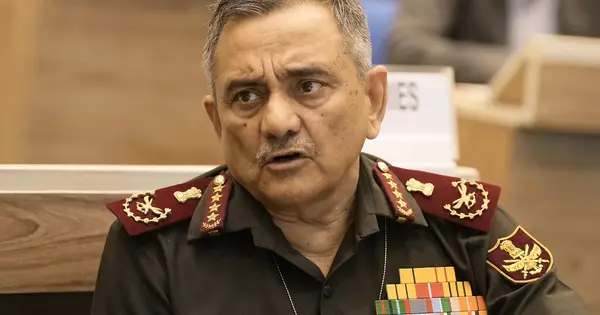India’s Multi-Domain Warfare Strategy: Countering Disinformation and Embracing Technology in Operation Sindoor
The modern battlefield has evolved significantly, transitioning from traditional physical combat to a complex interplay of technology, cyber operations, and information warfare. This shift was evident during India’s Operation Sindoor, a multi-domain operation launched in response to cross-border terrorism. Chief of Defence Staff (CDS) General Anil Chauhan revealed that a substantial 15% of the armed forces’ time during the operation was dedicated to countering fake news and misleading narratives, highlighting the crucial role of information management in contemporary warfare. The operation, which involved airstrikes on terror camps in Pakistan and Pakistan-occupied Kashmir, extended beyond conventional military action to encompass cyber capabilities, intelligence gathering, disinformation management, and seamless coordination across land, air, sea, and cyber domains.
General Chauhan emphasized the deliberate and measured approach adopted by India in its communication strategy during Operation Sindoor. Recognizing the potential for misinformation to rapidly distort public perception, the armed forces prioritized verified facts and credible evidence, even if it meant a delayed public response. This approach contrasts sharply with the reactive and often unsubstantiated claims disseminated by adversaries. The CDS cited the initial deployment of two women officers as primary spokespeople as an example of this strategy, allowing military leadership to focus on the dynamic operational landscape. This calculated approach aimed to ensure the dissemination of accurate information while maintaining operational security during the critical initial phase of the operation.
The evolving nature of modern warfare demands not only advanced technology but also the seamless integration of systems and real-time networking across all operational domains. General Chauhan stressed the importance of interconnectedness, stating that possessing advanced technology alone is insufficient without the capacity to leverage it effectively through a network of integrated systems. This highlights the shift towards a more holistic approach to warfare, where the synergy between different domains is paramount. While acknowledging the role of cyber operations in the conflict, the CDS downplayed their overall impact. He attributed this to India’s robust military systems, which are largely air-gapped, meaning they are isolated from the internet and thus less susceptible to cyberattacks. While public-facing platforms may have experienced some disruption, the core operational systems remained secure, demonstrating the effectiveness of India’s cybersecurity measures.
Operation Sindoor served as a testing ground for India’s evolving military doctrine, which emphasizes integrated technology, joint operations, and effective narrative control. The CDS highlighted the transition from linear warfare to operations conducted across distributed networks, where deception and information warfare have become increasingly important. This new paradigm necessitates organizational reforms, including the establishment of specialized units for drones, electronic warfare, and unmanned platforms, These reforms reflect India’s commitment to adapting to the challenges of modern warfare and building a force capable of operating effectively in a rapidly changing security environment.
India’s response to the disinformation campaign launched during Operation Sindoor was robust and focused. Foreign Secretary Vikram Misri directly addressed the false claims propagated by Pakistan, categorically refuting allegations of attacks on Indian military installations and critical infrastructure. This proactive approach aimed to counter the spread of misinformation and maintain public trust in the government’s narrative. This underscores the critical role of diplomatic efforts in the information domain, particularly in countering false narratives that aim to undermine operational objectives.
The lessons learned from Operation Sindoor are shaping India’s future military strategy. The CDS underscored the importance of integrated technology, joint operations, and robust narrative control as key elements of modern warfare. He emphasized the need for agile and adaptable forces capable of operating across multiple domains, demonstrating India’s commitment to modernizing its military and preparing for the challenges of 21st-century warfare. The experience gained from this operation will undoubtedly contribute to the ongoing evolution of India’s military doctrine and its ability to effectively counter both physical and informational threats in future conflicts.


